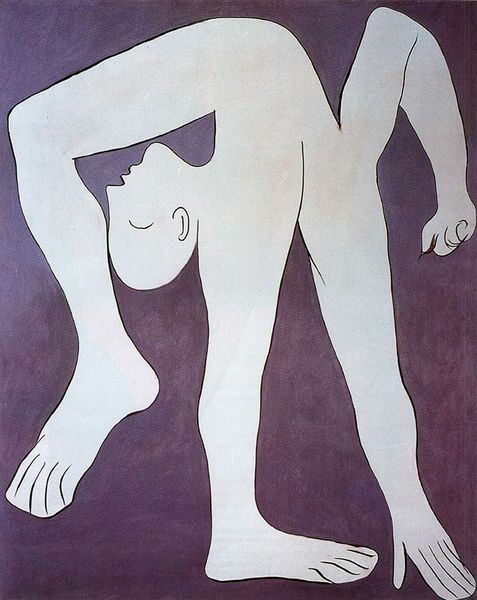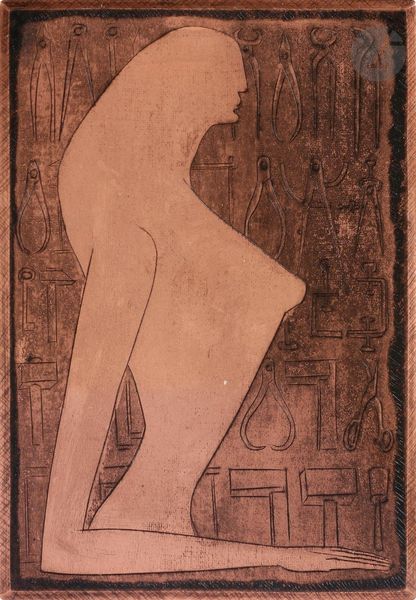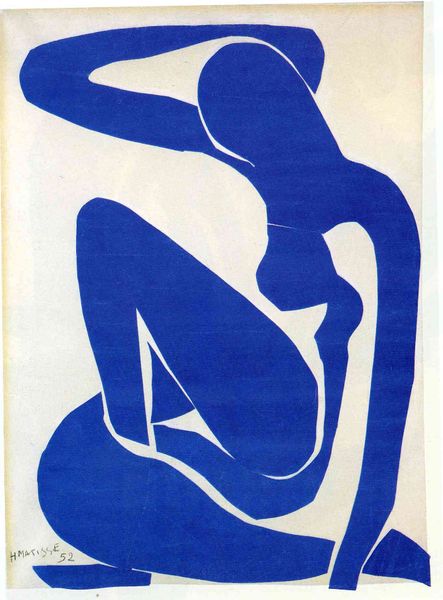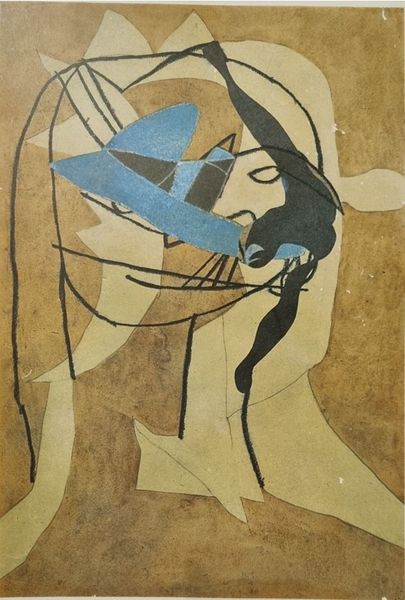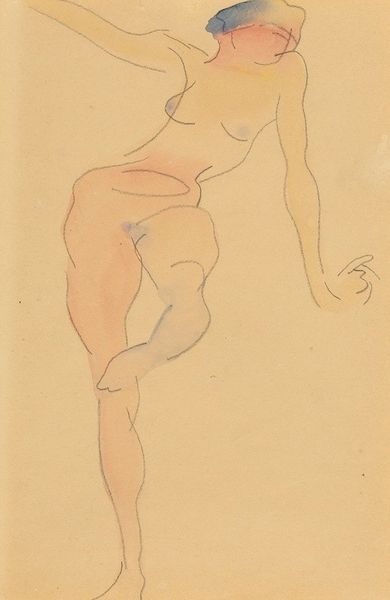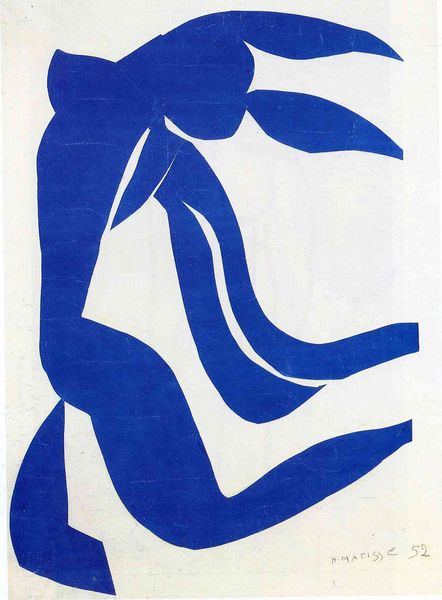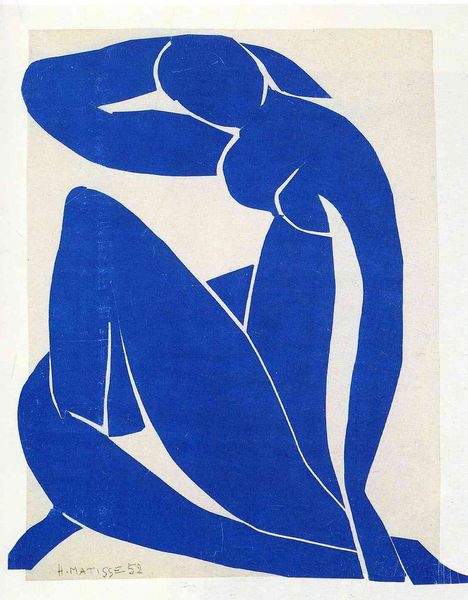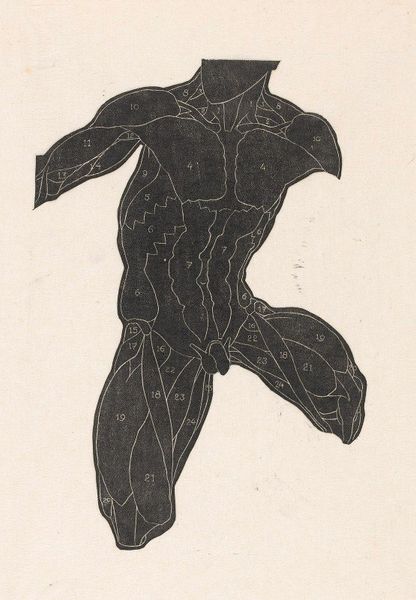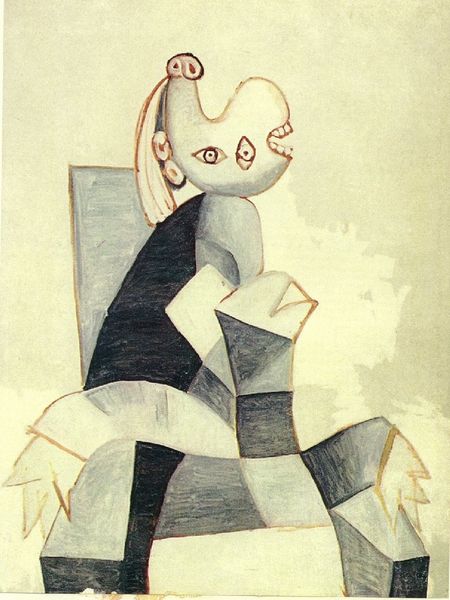
Dimensions: 162 x 130 cm
Copyright: Pablo Picasso,Fair Use
Editor: This is Picasso’s "A blue acrobat", created in 1929. It’s a really striking, mostly monochrome work of a figure in motion. What do you see in this piece, and what draws your eye? Curator: My attention is drawn to the dynamic tension established by the figure's pose. Note how the limbs extend outwards, seemingly defying gravity. The figure is defined by flowing contour lines against a subtle colored background that does not allow for spatial depth. This two-dimensionality contributes to the flattening of form. Editor: That's interesting. I was so focused on the single color that I didn't consider the negative space! Do you see elements of cubism in the monochrome palette? Curator: While the monochromatic approach departs from the polychromatic nature often seen in cubist paintings, consider the fracturing of form implied here. Notice the unconventional proportions, a hallmark of cubist interpretation of the human form. There's a departure from traditional anatomical representation in favor of simplified geometric forms. How might this abstraction challenge the viewer's perception of reality? Editor: It makes me rethink the idea of what a body looks like and what movement feels like. By focusing on line and form, Picasso seems to be capturing something more essential about acrobatics. Curator: Precisely! The artwork thus transcends mere representation. It allows us to reflect on form and balance. Editor: I never thought of the absence of color as such a strong formal element. Curator: Yes, analyzing how artists employ such compositional strategies will help expand your vocabulary for thinking and talking about art.
Comments
No comments
Be the first to comment and join the conversation on the ultimate creative platform.
